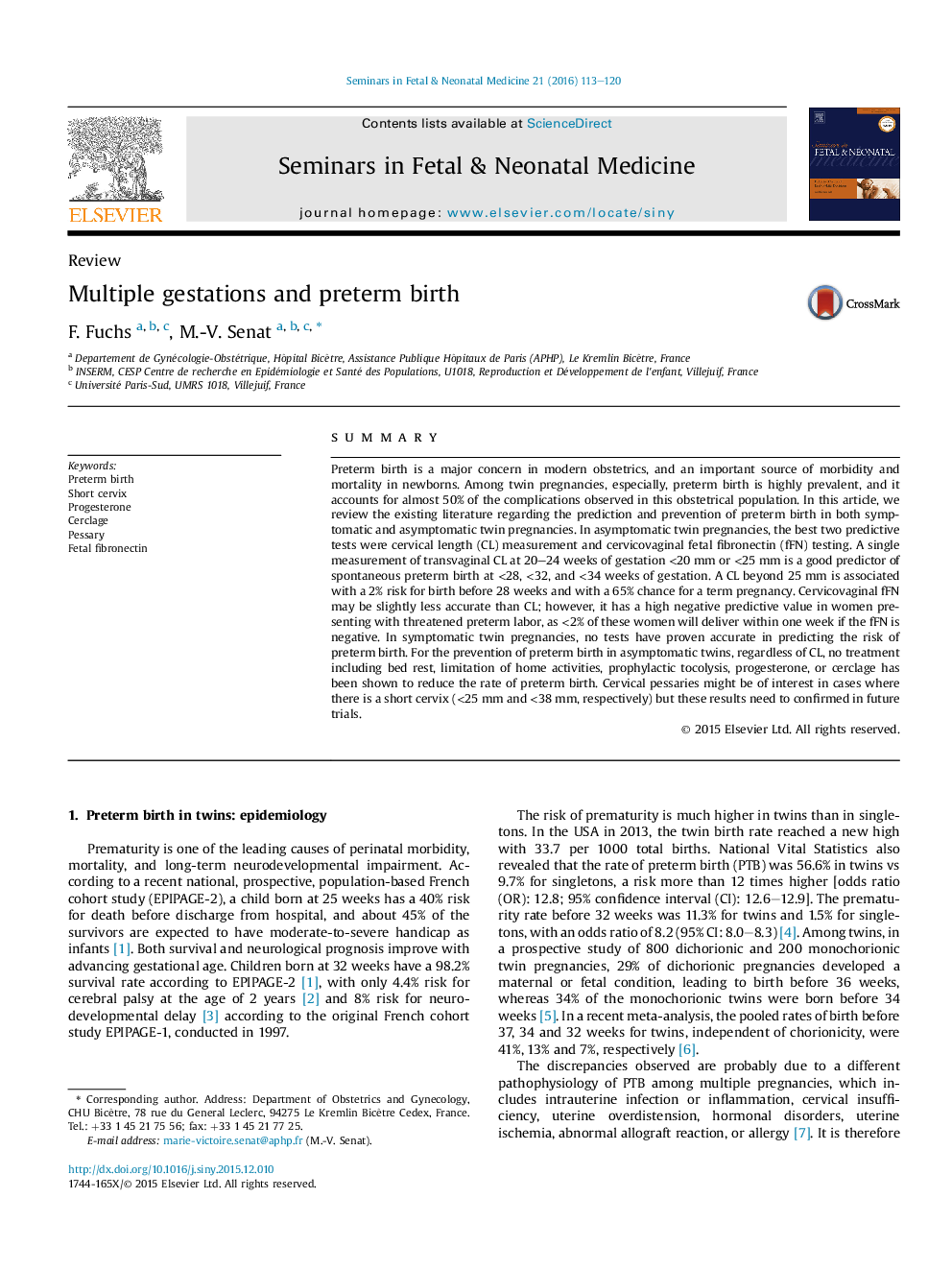| Article ID | Journal | Published Year | Pages | File Type |
|---|---|---|---|---|
| 3973979 | Seminars in Fetal and Neonatal Medicine | 2016 | 8 Pages |
SummaryPreterm birth is a major concern in modern obstetrics, and an important source of morbidity and mortality in newborns. Among twin pregnancies, especially, preterm birth is highly prevalent, and it accounts for almost 50% of the complications observed in this obstetrical population. In this article, we review the existing literature regarding the prediction and prevention of preterm birth in both symptomatic and asymptomatic twin pregnancies. In asymptomatic twin pregnancies, the best two predictive tests were cervical length (CL) measurement and cervicovaginal fetal fibronectin (fFN) testing. A single measurement of transvaginal CL at 20–24 weeks of gestation <20 mm or <25 mm is a good predictor of spontaneous preterm birth at <28, <32, and <34 weeks of gestation. A CL beyond 25 mm is associated with a 2% risk for birth before 28 weeks and with a 65% chance for a term pregnancy. Cervicovaginal fFN may be slightly less accurate than CL; however, it has a high negative predictive value in women presenting with threatened preterm labor, as <2% of these women will deliver within one week if the fFN is negative. In symptomatic twin pregnancies, no tests have proven accurate in predicting the risk of preterm birth. For the prevention of preterm birth in asymptomatic twins, regardless of CL, no treatment including bed rest, limitation of home activities, prophylactic tocolysis, progesterone, or cerclage has been shown to reduce the rate of preterm birth. Cervical pessaries might be of interest in cases where there is a short cervix (<25 mm and <38 mm, respectively) but these results need to confirmed in future trials.
